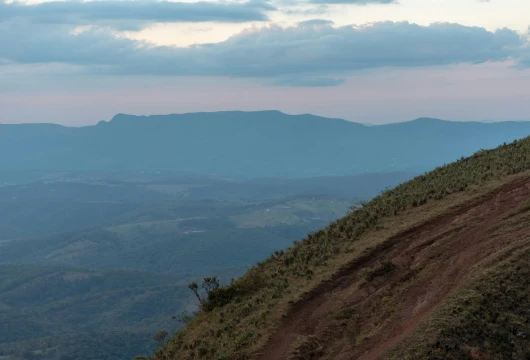IUCN’s WALD Innovation Facility Unveils Six High-Impact Carbon Projects for Climate, Biodiversity, and Community Empowerment
In a major step toward advancing global climate and biodiversity goals, the WALD Innovation Facility, managed by the International Union for Conservation of Nature (IUCN) and financed by the German Federal Ministry for Economic Cooperation and Development (BMZ) through KfW Development Bank, has launched six flagship carbon projects. These initiatives exemplify scalable, science-backed, and community-driven approaches to combine carbon sequestration, biodiversity conservation, and livelihood enhancement.
The announcement marks a crucial milestone in accelerating the world’s transition toward nature-positive economies, aligning closely with the Paris Agreement and the Kunming-Montreal Global Biodiversity Framework.
Bridging the Nature Finance Gap
The WALD Innovation Facility (WIF) provides grant funding of up to €1.5 million per project, offering critical early-stage financing to de-risk and strengthen promising carbon projects. This unique “ramp-up” support ensures that projects are not only viable but also capable of attracting long-term private investment.
Out of nearly 200 global applications, only six exceptional projects were selected after a rigorous evaluation process. Each project demonstrates high potential for climate impact, biodiversity restoration, and community engagement, underpinned by transparent governance and social safeguards.
“The Facility aims to raise the global bar for integrity, inclusivity, and measurable environmental outcomes,” said an IUCN spokesperson. “We’re not just offsetting carbon; we’re enabling ecosystems and people to thrive together.”
A Holistic Vision for Carbon Projects
Unlike conventional carbon offset schemes, the WALD Innovation Facility integrates biodiversity metrics, social inclusion, and climate resilience into its framework. Every funded project adheres to IUCN’s international standards, prioritizing the use of native species, many of which are listed as Critically Endangered (CR), Endangered (EN), or Vulnerable (VU) on the IUCN Red List.
By embedding strong environmental and social safeguards, the Facility ensures that local communities remain at the heart of every initiative. Projects must guarantee fair benefit-sharing, gender inclusion, and meaningful participation from indigenous populations.
This approach underscores the Facility’s belief that carbon integrity must go hand in hand with human and ecological well-being.
The Six Flagship Projects: Global Models of Climate Innovation
- Pahang Peatland Restoration Project (Malaysia)
Focused on restoring degraded peatlands in Pahang State, this initiative tackles the root causes of deforestation and frequent fires. By rewetting the peat ecosystem, it aims to curb greenhouse gas emissions, safeguard endangered species, and boost local community resilience. - Coffee Agroforestry for Carbon, Ecosystems, and Livelihoods (Brazil)
In the coffee-rich region of Minas Gerais, this project supports over 1,000 smallholder farmers to transition to agroforestry systems. The model promotes long-term carbon capture, stabilizes microclimates, and diversifies farmer income through sustainable coffee production. - Zanzibar Community Restoration Project (Tanzania)
Spanning 3,500 hectares across the islands of Pemba and Unguja, this community-led mangrove and forest restoration project enhances marine biodiversity, empowers women and indigenous groups, and promotes sustainable livelihoods for coastal populations. - Batang Asai Forest Restoration Project (Indonesia)
Located in South Sumatra, this initiative increases forest cover and biomass density, reducing greenhouse gas emissions while fostering carbon revenue streams for local communities. It also protects key habitats for wildlife and strengthens regional climate resilience. - EAGLE Restoration Project (Philippines)
Transforming degraded landscapes in Quezon province, the EAGLE project creates food and medicine forests, supports indigenous land rights, and restores critical watersheds—an innovative fusion of conservation and community health. - Empowering Coastal Communities through Seagrass Restoration (Tunisia)
Set in the Gulf of Gabès, this marine restoration project focuses on seagrass rehabilitation and sustainable fishing. The initiative strengthens coastal resilience, enhances marine biodiversity, and ensures sustainable incomes for fishing communities.
Beyond Carbon: A Blueprint for Nature-Positive Growth
The WALD Innovation Facility’s strategy goes beyond generating carbon credits. It aims to mainstream nature into corporate, policy, and investment frameworks—placing biodiversity at the center of climate action and sustainable finance.
This shift is essential as global carbon markets evolve. By 2030, the Facility envisions that its funded projects will serve as replicable blueprints for future carbon initiatives, influencing discussions at high-level climate conferences including COP30.
Through its multi-dimensional design—integrating climate mitigation, biodiversity protection, and social inclusion—the Facility showcases how carbon projects can deliver co-benefits at scale.
Science-Based, Inclusive, and Impact-Driven
Each of the six projects aligns with IUCN’s Nature 2030 priorities and the United Nations Sustainable Development Goals (SDGs). With robust scientific baselines, measurable outcomes, and community participation, these initiatives represent a new generation of carbon projects rooted in integrity and transparency.
The Facility also emphasizes capacity-building—training local stakeholders in ecosystem management, biodiversity monitoring, and financial planning. Such efforts ensure long-term sustainability and create local champions for conservation.
Furthermore, the Facility’s robust monitoring systems will track carbon sequestration, biodiversity indices, and socioeconomic benefits, ensuring transparency and credibility for investors and policymakers alike.
Driving Policy, Partnerships, and Private Investment
The WALD Innovation Facility aims to bridge the divide between conservation financing and market mechanisms. By demonstrating the viability of early-stage investments in high-integrity carbon projects, it seeks to mobilize greater private capital toward nature-based solutions.
This approach aligns perfectly with the Paris Agreement’s Article 6 framework, encouraging global cooperation through transparent, verifiable carbon credits that deliver real-world environmental benefits.
“Nature must not be seen as an externality,” noted a representative from BMZ. “It is central to our economic resilience. These projects represent how carbon markets can genuinely serve both people and the planet.”
A Milestone Toward COP30 and Beyond
The launch of these six flagship carbon projects signifies more than funding—it represents a global movement to align climate ambition with ecological stewardship.
By fostering innovation, accountability, and inclusivity, the WALD Innovation Facility has set a new global benchmark for what high-integrity carbon projects should look like: measurable, equitable, and deeply connected to nature and humanity alike.
As the world looks toward COP30, the Facility’s work stands as a testament that carbon projects—when designed with purpose and integrity—can indeed power the next era of sustainable development.
For more in-depth analysis and inspiring climate news, click here.

